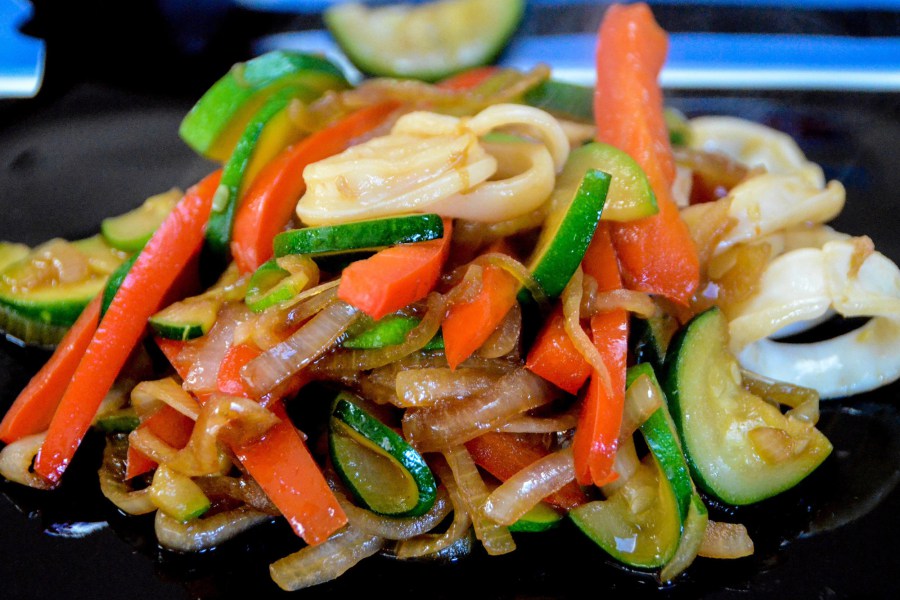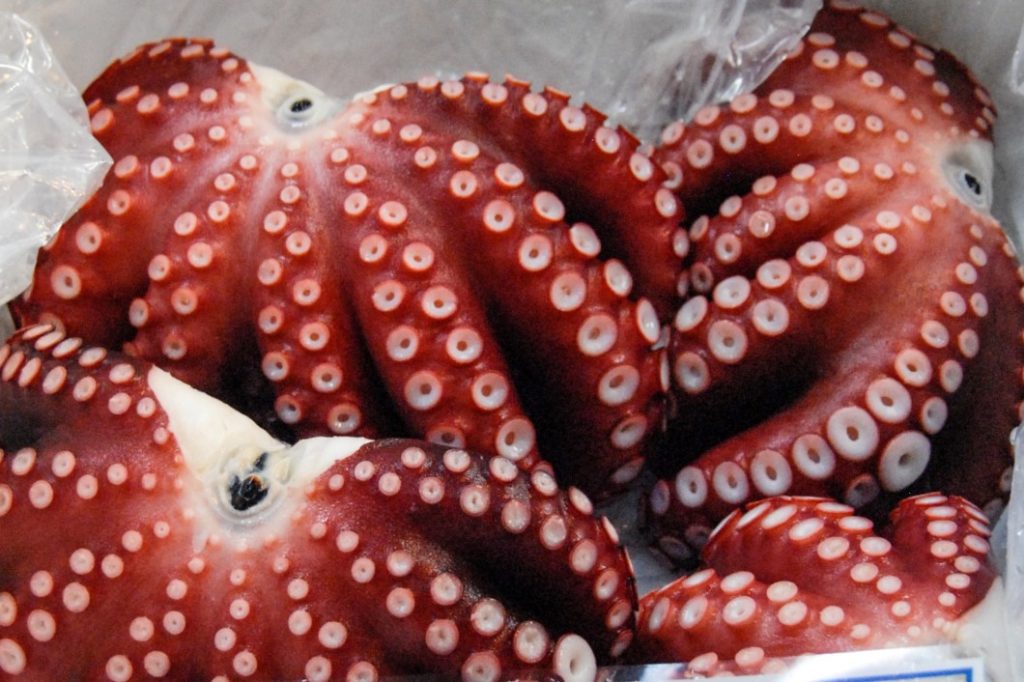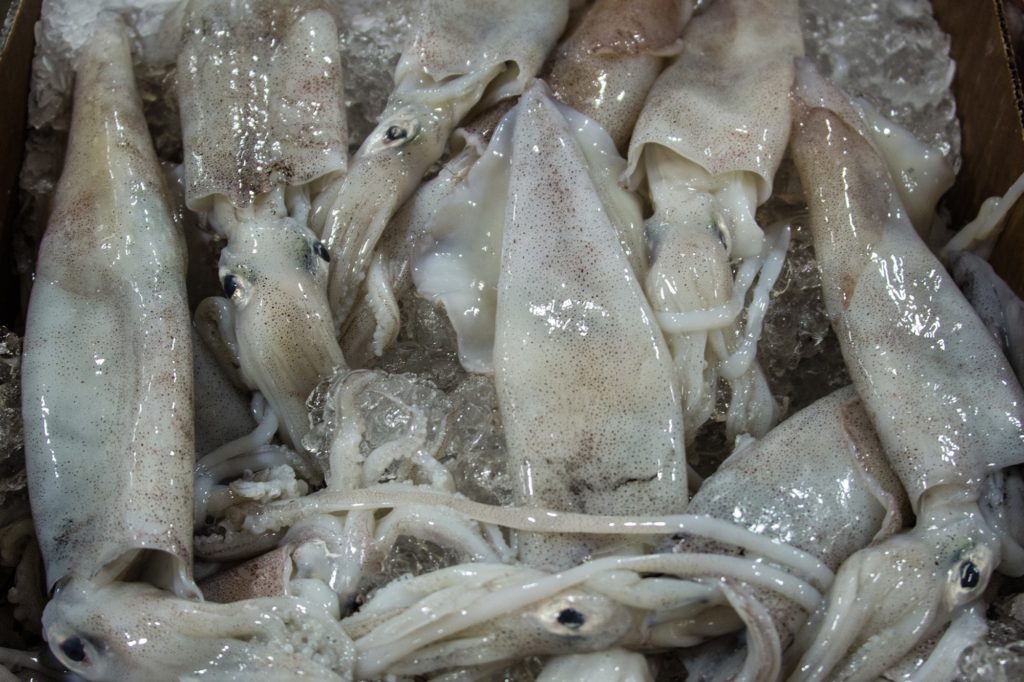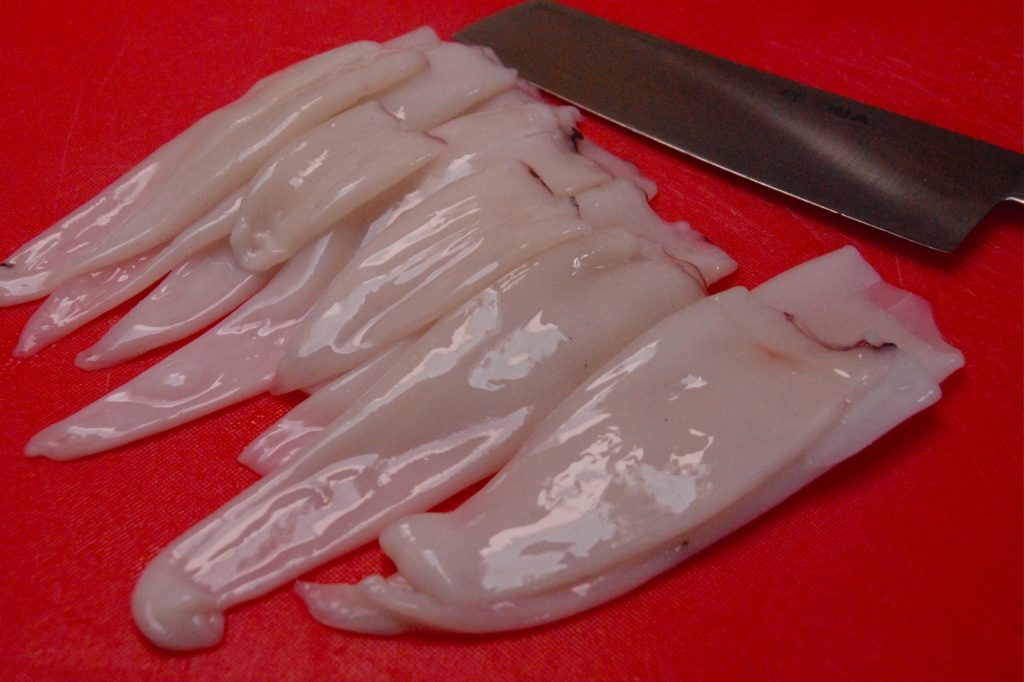Kathy Hunt 3·14·17 for ZesterDaily
For as long as I can remember, I’ve encouraged cooking students, friends and fellow diners to opt for squid over octopus. In return they usually say they have never tried it or they like deep-fried octopus too much to give up “calamari.” Besides, does anyone really know what to do with that freakish, tentacle-waving thing?
It turns out quite a few people and cultures know how to prepare squid. Japanese cooks slice it and serve it raw with grated ginger and soy sauce, or they batter it, deep-fry it and offer it as tempura. In Southeast Asia, chefs add it to curries and stir-fries, while in the Mediterranean they may stew, stuff, grill or fry it.
As for that beloved, deep-fried appetizer calamari, it’s not octopus that diners dunk into bowls of tomato, cocktail or tartar sauce. Whether calamar in Spanish, calamaro in Italian or calamari on restaurant menus, the name refers to the same thing: squid.
I can understand the confusion surrounding squid and octopus. Both are cephalopods from the mollusk family, a family that also includes clams, snails, cuttlefish and abalone. Both possess eight sucker-lined arms, three hearts, two eyes and a large head. Both have been dubbed head-footed, meaning their heads attach, loosely speaking, to their feet. Saltwater creatures, both live in tropical to temperate zones and propel themselves by sucking in and pushing out water.
While they do have many physical similarities, the two differ in one crucial aspect. Generally, squid possesses a better sustainability ranking than octopus.
Squid fisheries, particularly those dedicated to the longfin species, tend to be well managed. They track and restrict commercial landings and monitor habitat damage and bycatch. The fisheries also have the squid’s prolific reproduction and rapid growth rates in their favor; these traits make squid less susceptible to overfishing. Meanwhile, octopus fisheries are notorious for exploiting populations, harming habitats and hauling in large amounts of bycatch.
Sustainability and versatility are why I choose squid. Along with being fried, stewed or grilled, squid does well when braised, broiled, roasted, sautéed, steamed or served raw in sashimi or ceviche. Octopus, on the other hand, performs best with three techniques: braising, stewing or grilling.
With squid you can eat everything — eight arms, two tentacles, head, ink — but its beak, eyes and thin, hard, transparent interior bone. These should be removed and discarded before cooking.
The cigar-shaped head can be stuffed and cooked whole or sliced into strips, flat pieces or rings. Depending upon their length, the arms and tentacles can be cooked whole or halved and then cooked.
Squid’s sweetly salty, black ink, which it uses for defense, remains a prized flavoring. You can add it to homemade pasta dough for a touch of color and taste, incorporate it into a sauce, simmer it in rice dish or dress other seafood with it. Spaniards pair the ink with white rice, garlic, green peppers and squid or its close relation cuttlefish for the paella-like specialty arròs negre. In Italy, squid and ink partner with risotto, white wine, shallots, parmesan, parsley and shrimp for riso el al nero di seppia.
Squid goes especially well with such ingredients as celery, garlic, ginger, lemon, lime, onion, scallions, shallot, peppers, tomatoes, olives, pine nuts, walnuts, pasta, rice, polenta, couscous, fish and shellfish. Its mild flavor complements bay leaf, cilantro, honey, marjoram, mayonnaise, olive oil, parsley, ground pepper, saffron, sesame, soy sauce, thyme, vinegar and white wine.
Shopping for squid couldn’t be easier. Select fresh, slightly sweet-smelling squid with bright eyes and, if its been cleaned, a glistening, white body. If your fishmonger hasn’t cleaned it, the squid will have a purplish-brown membrane over it.
Of the species sold in markets, longfin is preferable. Along with being environmentally sound, it has fine, tender flesh and a delicate flavor. The same holds true for young or small squid, which can be as little as 1 inch long.
The majority of squid grow no larger than 2 feet long, but giant squid can reach up to 40 feet. Bigger squid are tougher in texture and should be used for stuffing, stewing or braising.
In all likelihood, what you purchase at your local market will have arrived there frozen and been defrosted before being put on display. If you purchase frozen squid, you should place it in a bowl on ice in your refrigerator and allow it to defrost overnight. Use it within one day of buying or defrosting.
The next time that you’re out for dinner or shopping at your local market, go for the more sustainable and adaptable seafood choice. Skip the octopus and ask for squid instead.
Salt ‘n’ Pink Pepper Squid
From “Fish Market” (Running Press, 2013)
To boost the flavor of this simple but delicious dish, set out a small bowl of hot sauce for dipping.
Prep time: 5 minutes
Cook time: 4 minutes
Total time: 9 minutes
Yield: Makes 4 servings
Ingredients
1 1/4 teaspoons coarse sea salt
1 tablespoon pink or red peppercorns
2 tablespoons olive oil
1 pound cleaned squid
Sesame oil, for dressing
Hot sauce for serving (optional)
Directions
1. Using a mortar and pestle, crush the salt and peppercorns together so you have a rough mixture of the two.
2. Heat the olive oil in a large frying pan on medium-high.
3. Using a knife, score one side of the squid sections in a crisscross pattern. Cut the squid into four equal, bite-sized sections; if you have small squid, just cut them in half. Season the squid on both sides with the salt-and-pepper mixture. Shake off any excess coating and place the squid in the pan.
4. Cook until the pieces start to curl up on the edges or bulge in the center, 1 to 2 minutes. Flip over and cook on the other side until it also curls, about 1 minute. Remove and place the squid on a platter. Drizzle sesame oil to taste over the squid. Serve immediately.
Main image: Squid stir-fry. Credit: Copyright 2016 Kathy Hunt



